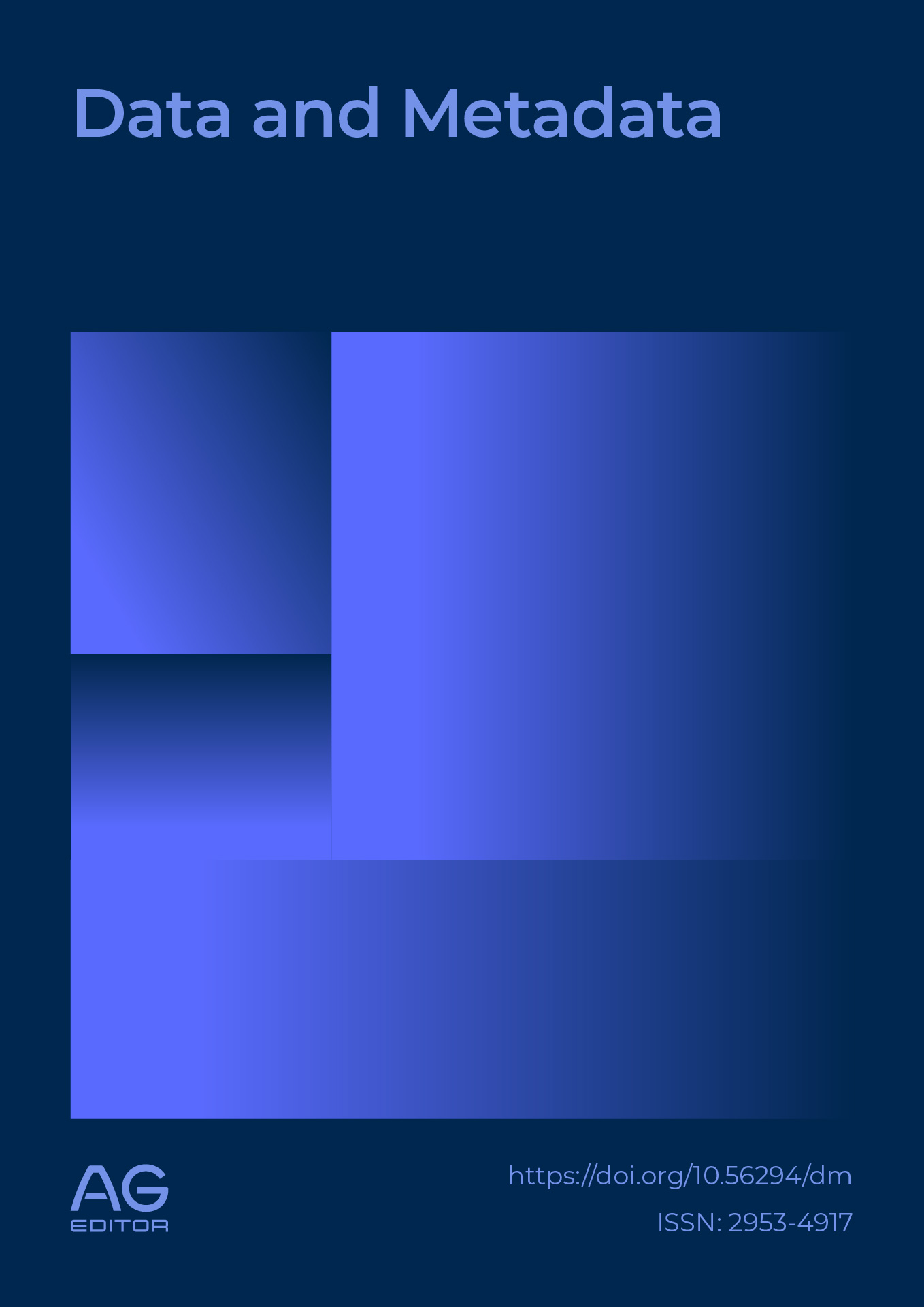Factors Influencing Satisfaction and Continued Use Intention of ChatGPT in the Academic Context: Analysis Using Structural Equation Modeling
DOI:
https://doi.org/10.56294/dm2025728Keywords:
ChatGPT, user satisfaction, intention to use, higher education, artificial intelligenceAbstract
Artificial intelligence tools like ChatGPT have transformed higher education by facilitating academic tasks and improving autonomous learning. However, their acceptance and continued use depend on factors such as compatibility, efficiency, satisfaction, and intention to use. This study applies Structural Equation Modeling (SEM) to evaluate these relationships. To analyze how these factors influence user satisfaction and continued use intentions of ChatGPT among university students. Study involved 210 students from Ecuadorian universities. Validated surveys were used to assess six constructs: compatibility, efficiency, perceived ease of use, perceived usefulness, satisfaction, and continued use intention. Data were analyzed using Exploratory and Confirmatory Factor Analysis, followed by SEM for model adjustment. The findings identified a four-factor structure explaining 63% of the variance. Fit indices were acceptable (CFI = 0.876, SRMR = 0.064), with significant factor loadings (p<0.001). However, high correlations among factors suggested conceptual redundancy. ChatGPT is perceived as a useful, satisfying tool aligned with students' learning styles, promoting its continued adoption. Nonetheless, refining the factor structure could improve the model.
References
1. Rawas S. ChatGPT: Empowering lifelong learning in the digital age of higher education. Educ Inf Technol. abril de 2024;29(6):6895-908. DOI: https://doi.org/10.1007/s10639-023-12114-8
2. Shaengchart Y, Bhumpenpein N, Kongnakorn K, Khwannu P, Tiwtakul A, Detmee S. Factors influencing the acceptance of ChatGPT usage among higher education students in Bangkok, Thailand. Adv Knowl Exec. 2023;2(4):1-14.
3. Al-Adwan AS, Li N, Al-Adwan A, Abbasi GA, Albelbisi NA, Habibi A. “Extending the Technology Acceptance Model (TAM) to Predict University Students’ Intentions to Use Metaverse-Based Learning Platforms”. Educ Inf Technol. noviembre de 2023;28(11):15381-413. DOI: https://doi.org/10.1007/s10639-023-11816-3
4. Al-shanableh N, Alzyoud M, Alomar S, Kilani Y, Nashnush E, Al-Hawary S, et al. The adoption of big data analytics in Jordanian SMEs: An extended technology organization environment framework with diffusion of innovation and perceived usefulness. Int J Data Netw Sci. 2024;8(2):753-64. DOI: https://doi.org/10.5267/j.ijdns.2024.1.003
5. Ma J, Wang P, Li B, Wang T, Pang XS, Wang D. Exploring User Adoption of ChatGPT: A Technology Acceptance Model Perspective. Int J Human–Computer Interact. 22 de febrero de 2024;1-15.
6. Shah CS, Mathur S, Vishnoi SKr. Continuance Intention of ChatGPT Use by Students. En: Sharma SK, Dwivedi YK, Metri B, Lal B, Elbanna A, editores. Transfer, Diffusion and Adoption of Next-Generation Digital Technologies [Internet]. Cham: Springer Nature Switzerland; 2024 [citado 20 de noviembre de 2024]. p. 159-75. (IFIP Advances in Information and Communication Technology; vol. 697). Disponible en: https://link.springer.com/10.1007/978-3-031-50188-3_14 DOI: https://doi.org/10.1007/978-3-031-50188-3_14
7. Ansari AN, Ahmad S, Bhutta SM. Mapping the global evidence around the use of ChatGPT in higher education: A systematic scoping review. Educ Inf Technol. junio de 2024;29(9):11281-321. DOI: https://doi.org/10.1007/s10639-023-12223-4
8. Cai P. Generative Language Models for Personalized Information Understanding. 2024 [citado 20 de noviembre de 2024]; Disponible en: https://scholarworks.umass.edu/dissertations_2/3036/
9. Romero-Rodríguez JM, Ramírez-Montoya MS, Buenestado-Fernández M, Lara-Lara F. Use of ChatGPT at University as a Tool for Complex Thinking: Students’ Perceived Usefulness. J New Approaches Educ Res. julio de 2023;12(2):323-39. DOI: https://doi.org/10.7821/naer.2023.7.1458
10. Almusaed A, Almssad A, Yitmen I, Homod RZ. Enhancing student engagement: Harnessing “AIED”’s power in hybrid education—A review analysis. Educ Sci. 2023;13(7):632. DOI: https://doi.org/10.3390/educsci13070632
11. Yu C, Yan J, Cai N. ChatGPT in higher education: factors influencing ChatGPT user satisfaction and continued use intention. Front Educ [Internet]. 3 de mayo de 2024 [citado 25 de octubre de 2024];9. Disponible en: https://www.frontiersin.org/journals/education/articles/10.3389/feduc.2024.1354929/full DOI: https://doi.org/10.3389/feduc.2024.1354929
12. Gallegati S, Aquilanti L, Temperini V, Polinesi G, Rappelli G. The impact of coronavirus information-seeking behavior on dental care access: A cross-sectional questionnaire-based study. Int J Environ Res Public Health. 2021;18(22):12050. DOI: https://doi.org/10.3390/ijerph182212050
13. Sadeghi M, Casey P, Carranza EJM, Lynch EP. Principal components analysis and K-means clustering of till geochemical data: Mapping and targeting of prospective areas for lithium exploration in Västernorrland Region, Sweden. Ore Geol Rev. 2024;106002. DOI: https://doi.org/10.1016/j.oregeorev.2024.106002
14. Lorenzo-Seva U. SOLOMON: a method for splitting a sample into equivalent subsamples in factor analysis. Behav Res Methods. 16 de diciembre de 2021;54(6):2665-77. DOI: https://doi.org/10.3758/s13428-021-01750-y
15. Inguva P, Bhute VJ, Cheng TN, Walker PJ. Introducing students to research codes: A short course on solving partial differential equations in Python. Educ Chem Eng. 2021;36:1-11. DOI: https://doi.org/10.1016/j.ece.2021.01.011
16. Persson I, Khojasteh J. Python Packages for Exploratory Factor Analysis. Struct Equ Model Multidiscip J. 2 de noviembre de 2021;28(6):983-8. DOI: https://doi.org/10.1080/10705511.2021.1910037
17. Steele JS, Grimm KJ. Using SymPy (Symbolic Python) for Understanding Structural Equation Modeling. Struct Equ Model Multidiscip J. 27 de marzo de 2024;1-12.
18. Meshcheryakov G, Igolkina AA, Samsonova MG. semopy 2: A Structural Equation Modeling Package with Random Effects in Python [Internet]. arXiv; 2021 [citado 25 de octubre de 2024]. Disponible en: http://arxiv.org/abs/2106.01140
19. Beribisky N, Hancock GR. Comparing RMSEA-Based Indices for Assessing Measurement Invariance in Confirmatory Factor Models. Educ Psychol Meas. agosto de 2024;84(4):716-35. DOI: https://doi.org/10.1177/00131644231202949
20. Zhang X, Savalei V. New computations for RMSEA and CFI following FIML and TS estimation with missing data. Psychol Methods. 2023;28(2):263. DOI: https://doi.org/10.1037/met0000445
21. Bhatia T, Bharathy G, Prasad M. A Targeted Review on Revisiting and Augmenting the Framework for Technology Acceptance in the Renewable Energy Context. Energies. 2024;17(8):1982. DOI: https://doi.org/10.3390/en17081982
22. Rosli MS, Awalludin MFN, Han CT, Saleh NS, Noor HM. Unlocking insights: A comprehensive dataset analysis on the acceptance of computational thinking skills among undergraduate university students through the lens of extended technology acceptance model, HTMT, covariance-based SEM, and SmartPLS. Data Brief. 2024;54:110463. DOI: https://doi.org/10.1016/j.dib.2024.110463
23. Al Shloul T, Mazhar T, Iqbal M, yaseen Ghadi Y, Malik F, Hamam H. Role of activity-based learning and ChatGPT on students’ performance in education. Comput Educ Artif Intell. 2024;100219. DOI: https://doi.org/10.1016/j.caeai.2024.100219
24. Pereira E, Nsair S, Pereira LR, Grant K. Constructive alignment in a graduate-level project management course: an innovative framework using large language models. Int J Educ Technol High Educ. 17 de abril de 2024;21(1):25. DOI: https://doi.org/10.1186/s41239-024-00457-2
Downloads
Published
Issue
Section
License
Copyright (c) 2025 Edgar Rolando Morales Caluña, Dario Javier Cervantes Diaz, Cristian Ismael Morales Caluña, Fernando Xavier Altamirano Capelo (Author)

This work is licensed under a Creative Commons Attribution 4.0 International License.
The article is distributed under the Creative Commons Attribution 4.0 License. Unless otherwise stated, associated published material is distributed under the same licence.




